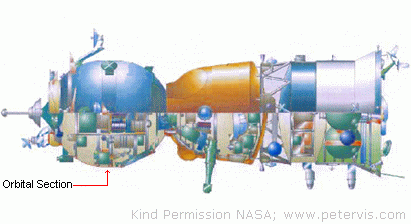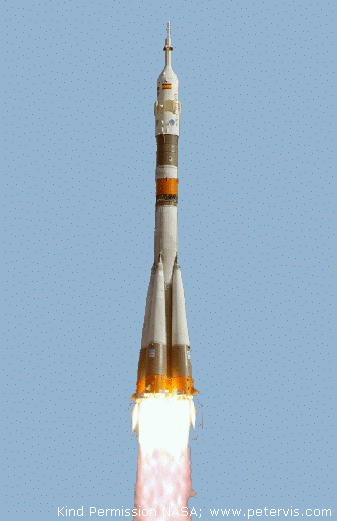Soyuz TMA Spacecraft

The Soyuz TMA spacecraft provides a lifeboat service to the International Space Station (ISS) in the unlikely event of having to abandon it in an emergency. At one time, the Space Shuttle would have performed that function, but now, America is more reliant on Russia for this. The spacecraft consists of four main modules each providing a vital function for space travel; orbital, descent, instrumentation, and propulsion. The orbital module houses the crew whilst in orbit. It is 6.5 cubic metres in size. It also has a docking port for connecting with the ISS. There is a small window in the module used during the docking procedure. The orbital module connects to the descent module via a common hatch. This module separates away from the other two when re-entering into the Earth's atmosphere.
The descent module is where the cosmonauts and the space tourist sit when returning to Earth. The module contains life-support systems, batteries, parachutes and retro thrust rockets. The module has individually moulded seats to fit each person. When the Space shuttle was in service, the crew brought these custom-made seats with them, which fitted to the Soyuz upon its return. The descent module is four cubic metres in size, which is large enough for two people. This is the only part of the spacecraft to return to Earth. The other two modules jettison away. The propulsion section consists of the oxygen storage tanks, control thrusters, and electronics. The instrumentation section contains the main computer system sealed inside a metal canister and surrounded by nitrogen gas to keep it cool. There is also the electronics for the communication and guidance.
The Soyuz TMA is the replacement to the early Soyuz TM series used successfully from 1986 to 2002 to take cosmonauts to the Russian Space Station MIR. The TMA series provides increased safety during descent and re-entry, the computers are smaller and more powerful, and the displays are better. The TMA can accommodate a wider range of cosmonauts. The current version can accommodate crewmembers between 1.5 m to 1.9 m in height and between 50 kg to 95 kg mass. The TMA also has better landing engines, entry control system, and components that provide greater performance and reliability.
Soyuz Rocket

The Soyuz launch vehicle is one of the most successful rockets on the planet used over 1600 times carrying human passengers. The Russian launch site is typically the Baikonur Cosmodrome in Kazakhstan.
This Article Continues...
The Space Tourist's HandbookSoyuz TMA Spacecraft